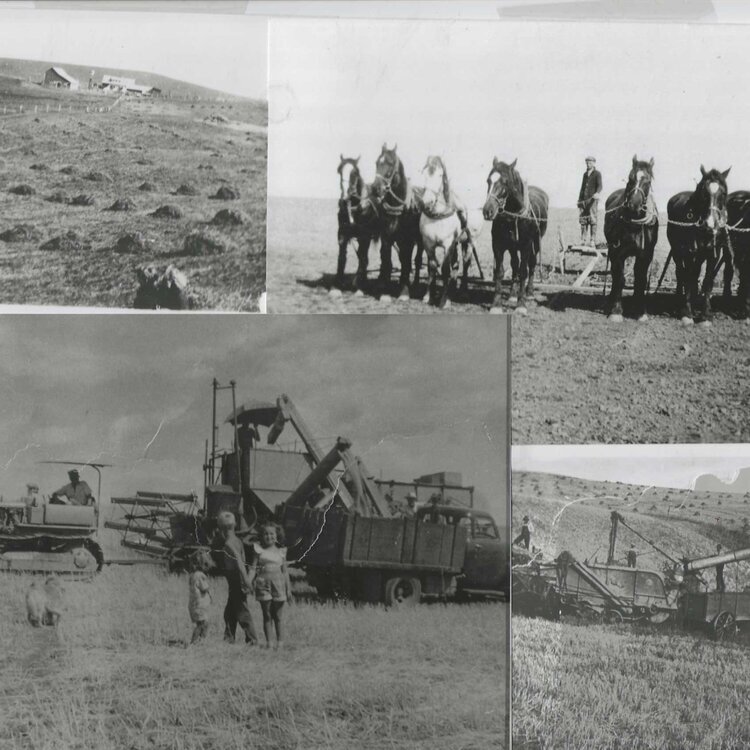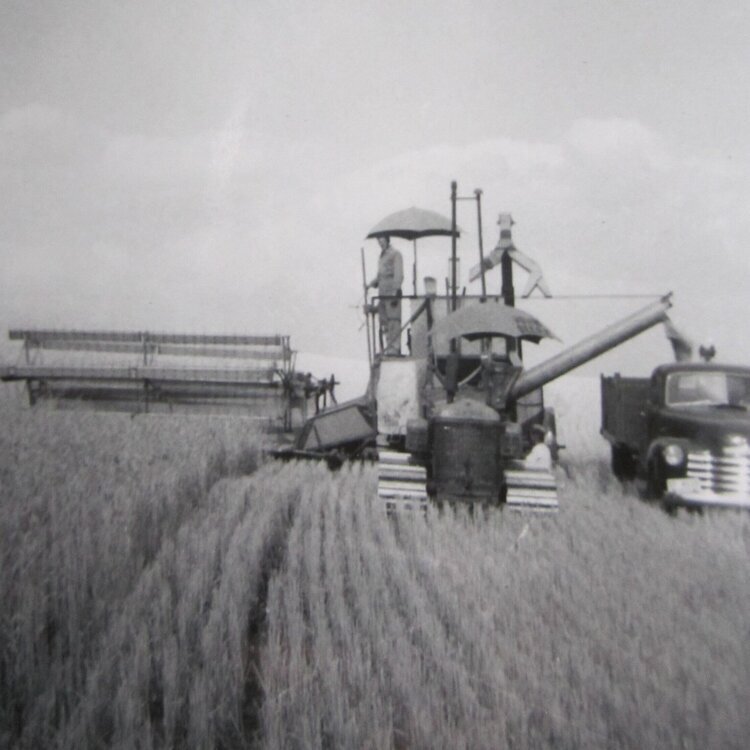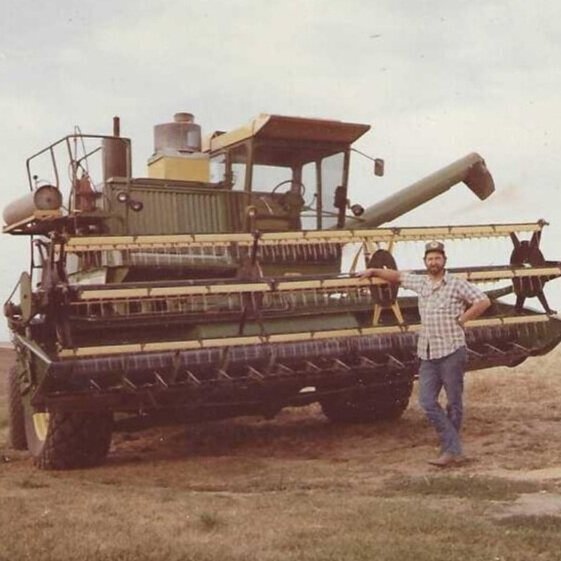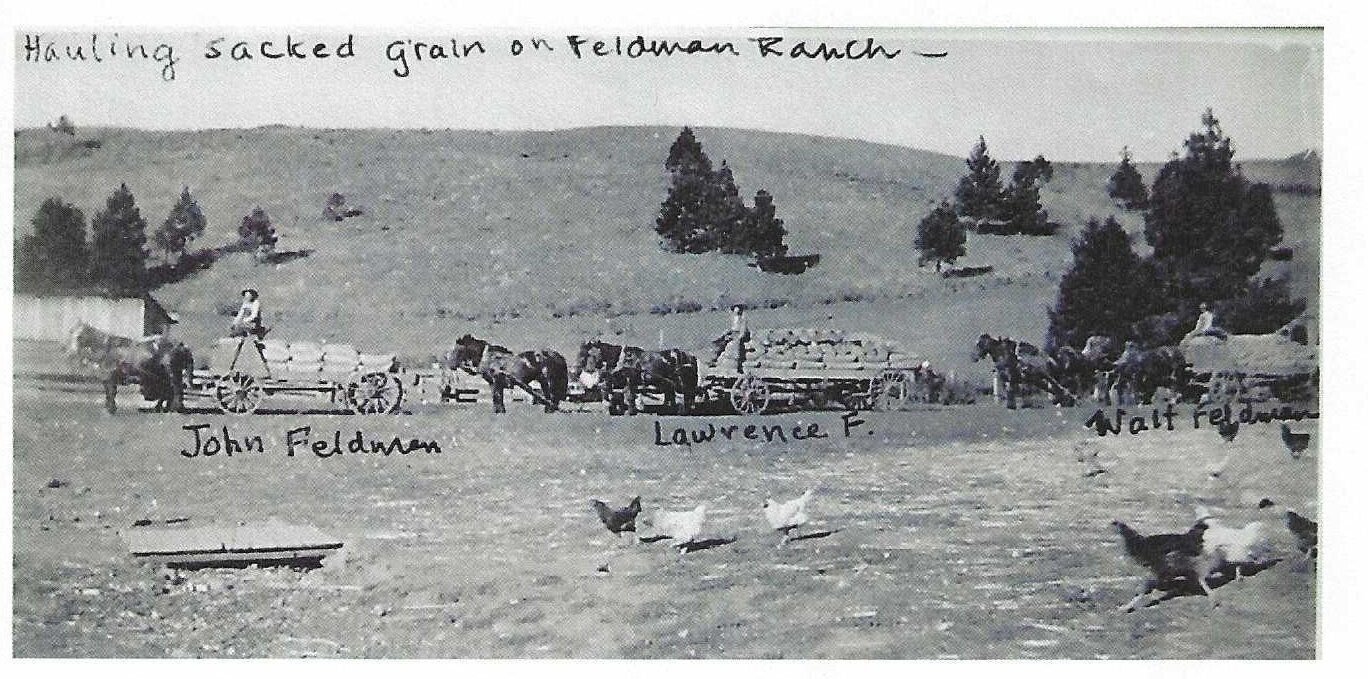Feldman Solbrack Farm
FELDMAN - SOLBRACK FARM
Walt and Marie’s wedding photo.
History:
WALT FELDMAN AND MARIE SCHMIDT AND THEIR FAMILIES WERE GERMAN IMMIGRANTS.
Walt’s family moved to the Rosalia area in 1902 from Minnesota. The promise of cheaper land and the ability to raise apples, thought to be good for the stomach, brought them west. The "Westward Ho" trip planning started in the late 1890's but took place in 1902.
Marie’s family moved to the Rosalia area in 1902 from Minnesota as well. Both families settled within two miles of each other. Walt and Marie were neighbors and both attended the North Pine school. They married in 1919 and built their home on the farm, raising wheat and barley (to feed the horses) on 380 acres. They had 3 daughters.
Marvin and Clare harvesting in the late 40s/early 50s.
One of their daughters, Ellen, married Clare Solbrack from Iowa, after meeting him during the war (WWII).
Clare and Tom, 1999.
Their son, Tom, and his wife, Ella, began farming in 1982. Tom suffered a stroke in 2007, and his son, Matt began farming at that point.
Tom retired, and Matt took over day-to-day operations with the help of Tom’s knowledge. Sarah came to work on the farm in 2009. Tom passed away in 2019.
Matt and Sarah as kids.
Today:
SARAH AND MATT ARE A 4TH GENERATION BROTHER-SISTER TEAM WHO OPERATE THIS 2,300 ACRE FARM TOGETHER.
Today they raise wheat, barley and lentils. They are a new Centennial farm, but beyond proud to join the club. Matt always knew he wanted to be a farmer and loves doing it. He currently lives in the home Walt and Marie built. They both agree that the older generations had an adventurous spirit and would sod by hand. They were so brave and amazed at what they did.
Sarah and Matt.
Sarah learned how to work hard and wants to pass that along to her kids. She also has a lot of pride in her work. She has a 7-year old and 5-year old, and her biggest fear is that the farm will end with her and her brother and her children will not want to be farmers. Sarah has a background in communications and running the family farm was not part of the plan, but now she can’t imagine it any other way and is incredibly proud to be a farmer.
Biggest changes:
THE BIGGEST CHANGE ON THE FARM IS HOW HORSEPOWER IS APPLIED!
The farm has seen power go from horses to crawlers, and then to tractors. In 1954, their grandpa Clare bought the first self-propelled combine and that was a game changer. Another big change was they used to raise a lot of peas, but the market has dropped for that so they are now growing lentils.
Sarah and her family.
The yields have doubled too. They used to get 40 bushel of wheat per acre, and this past year they got 125 (but that is a record year!). Normally, they average 82 bushels of wheat per acre each year.
They are also able to harvest 10 times more than what the previous generations did per day. Back then they would harvest about 10 acres a day, and today they average about 100 acres a day. Matt said he learned to be conservative. He said, “Dad always told me that you don’t want to try and hit home runs, you want to get the base hits. And to not cut back on fertilizer.” Well said Tom!













